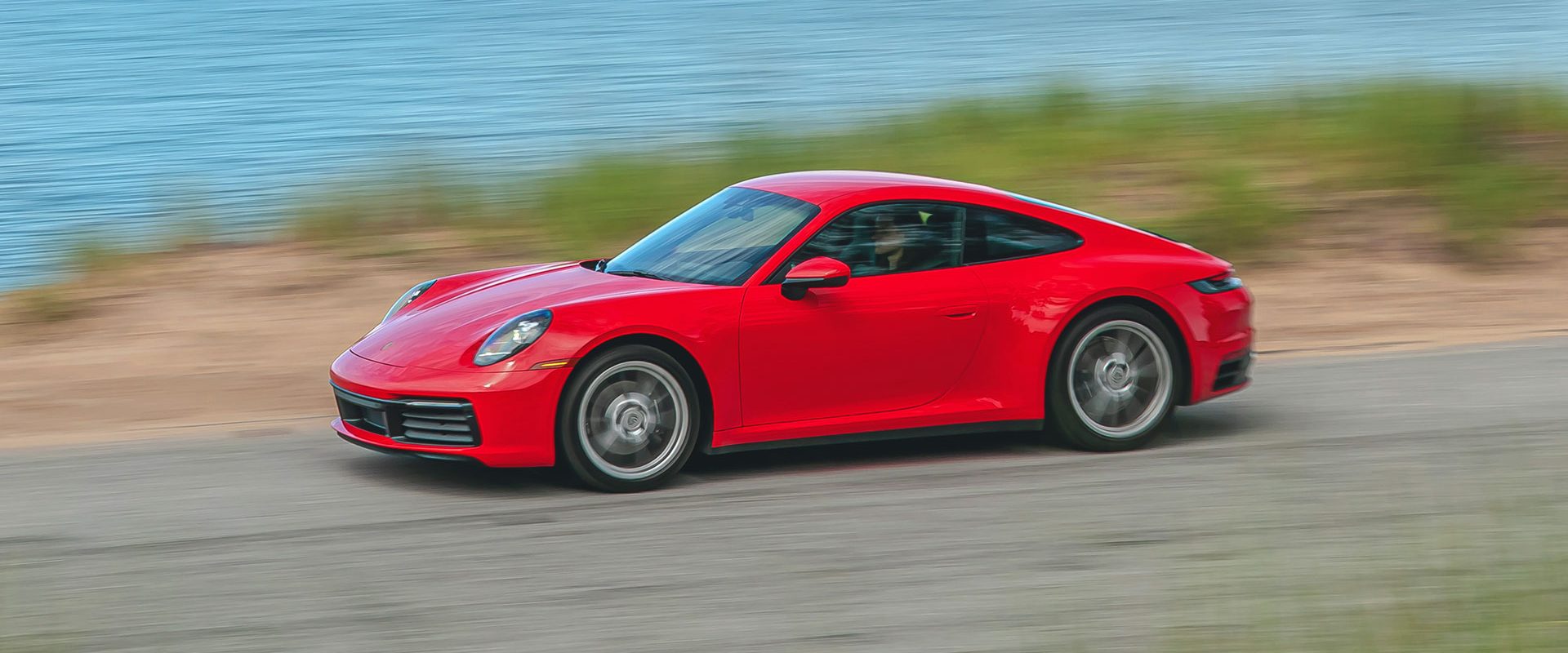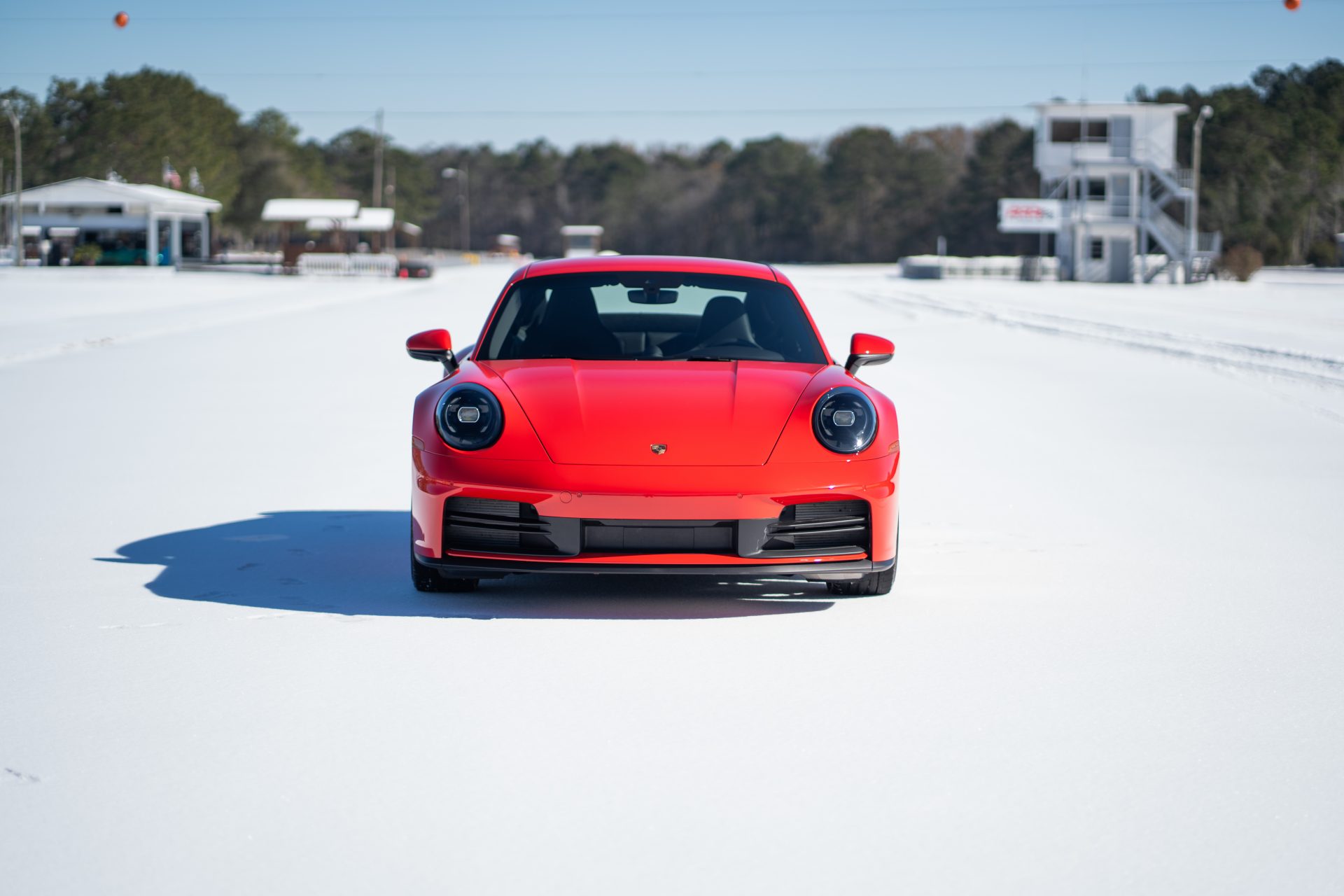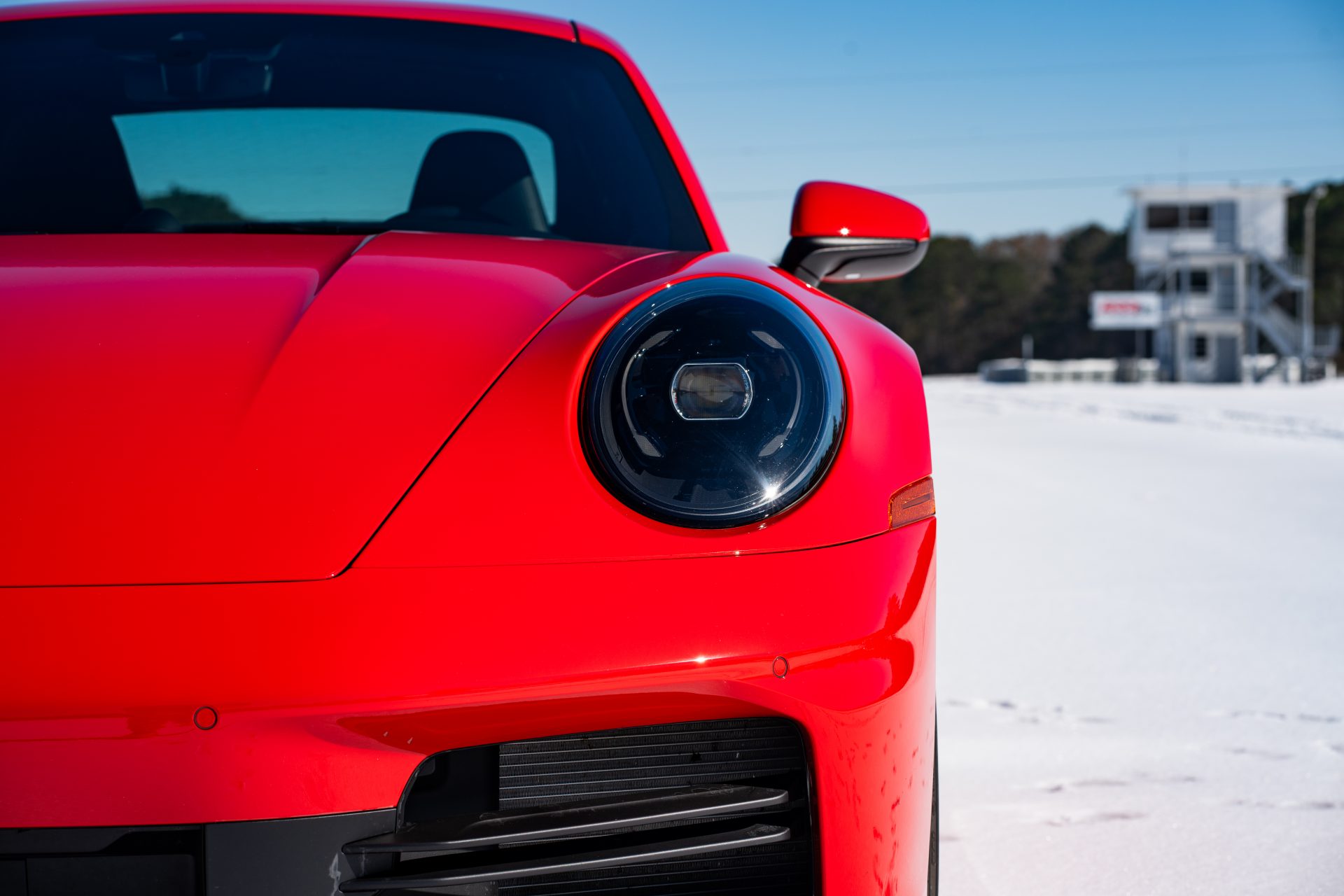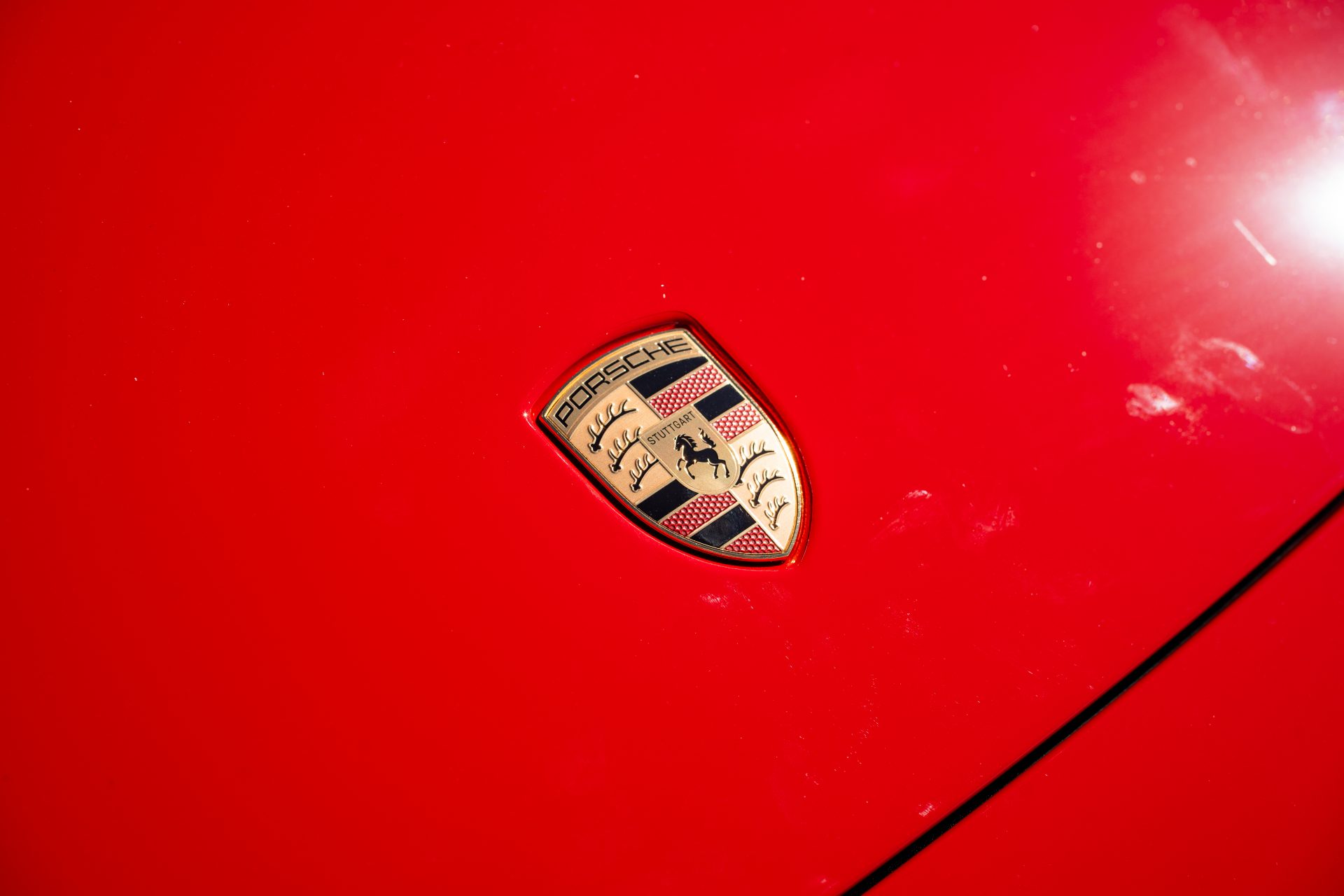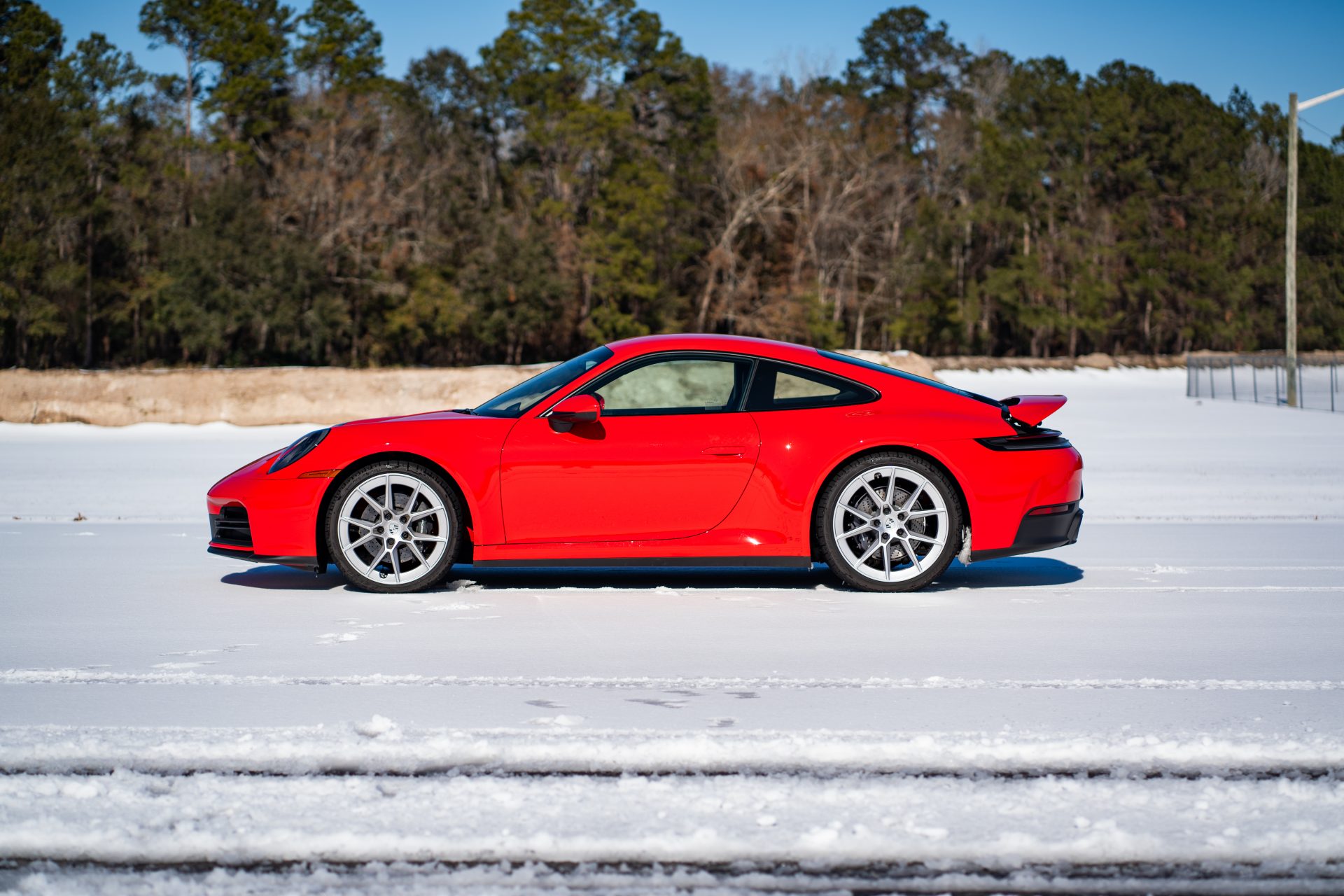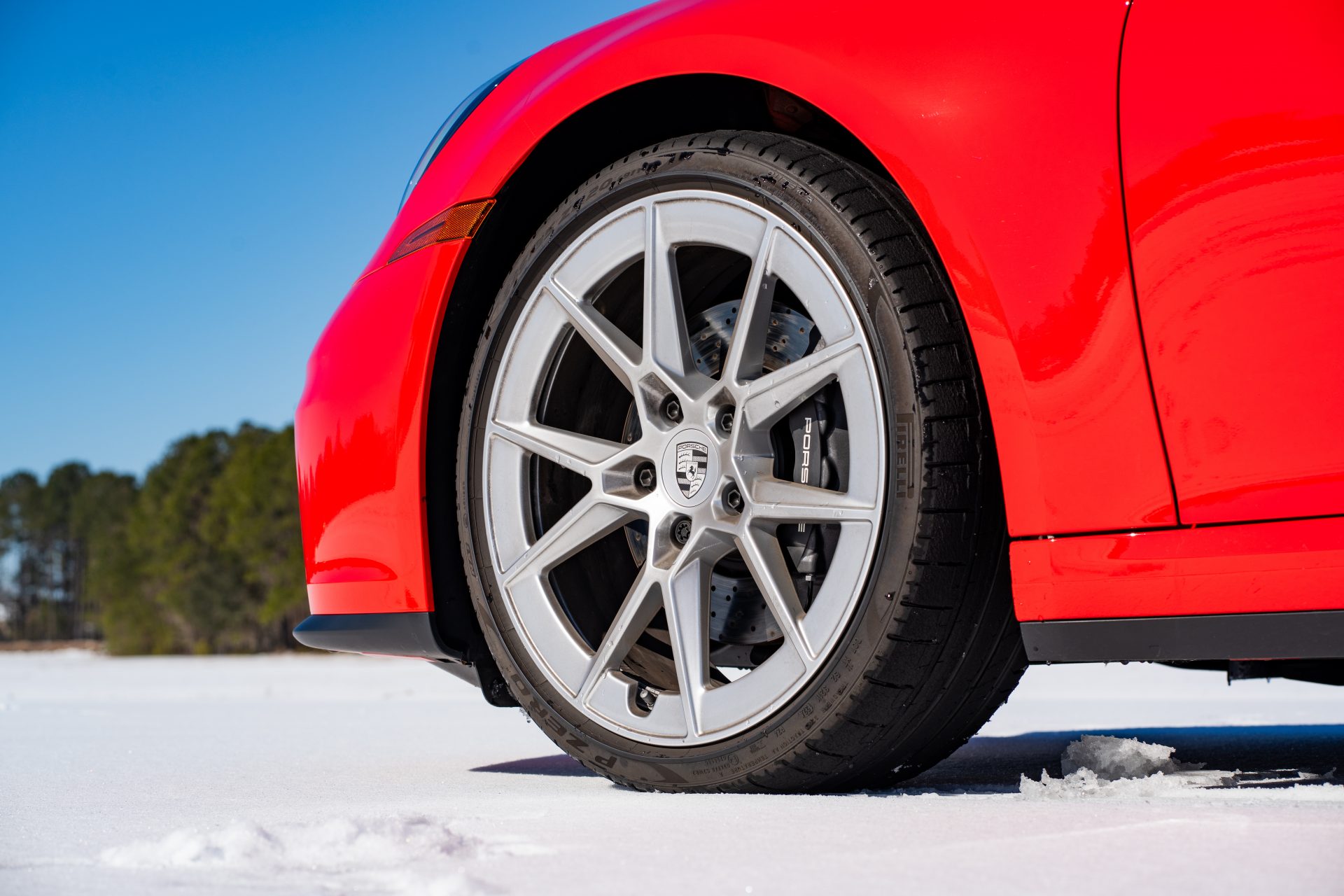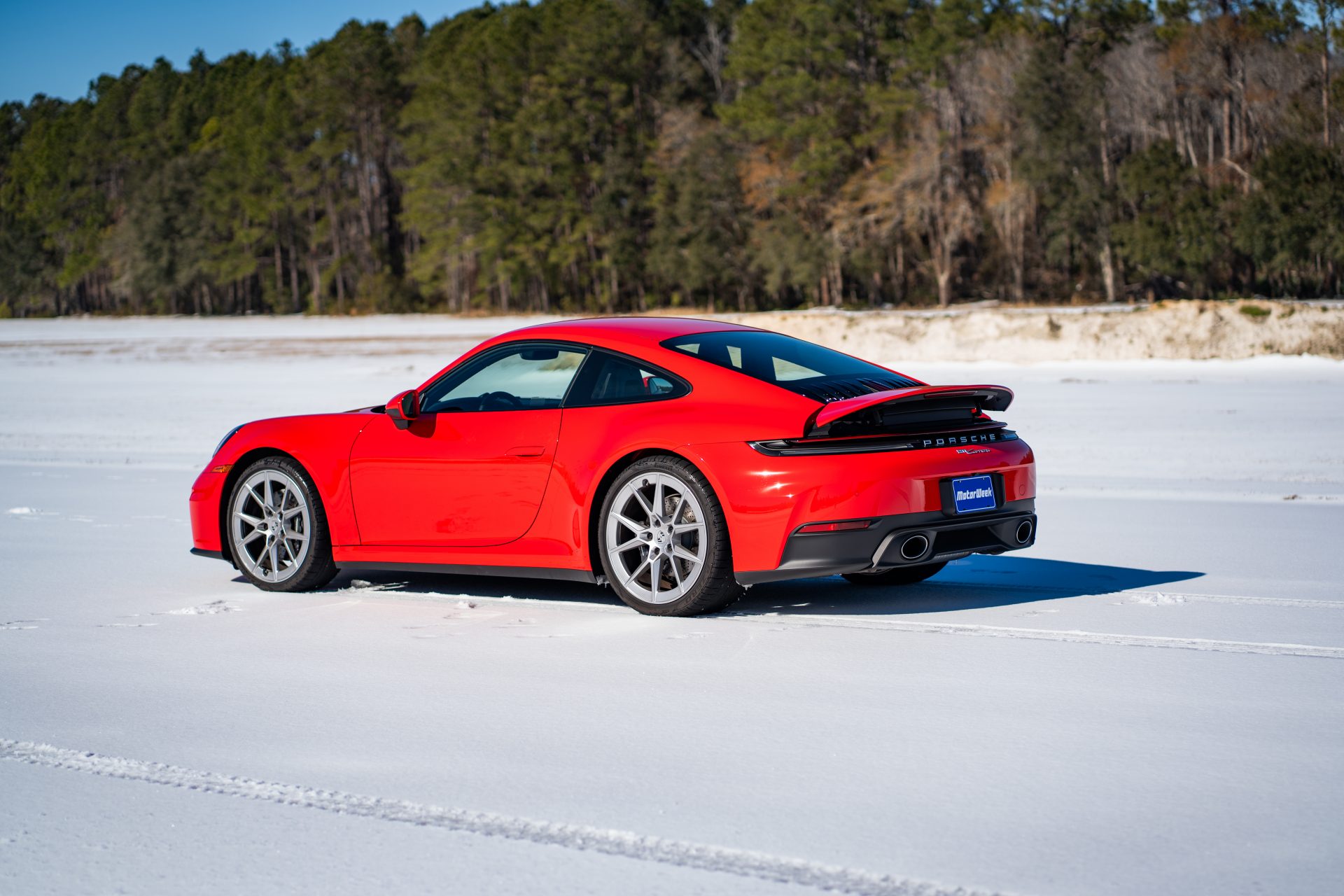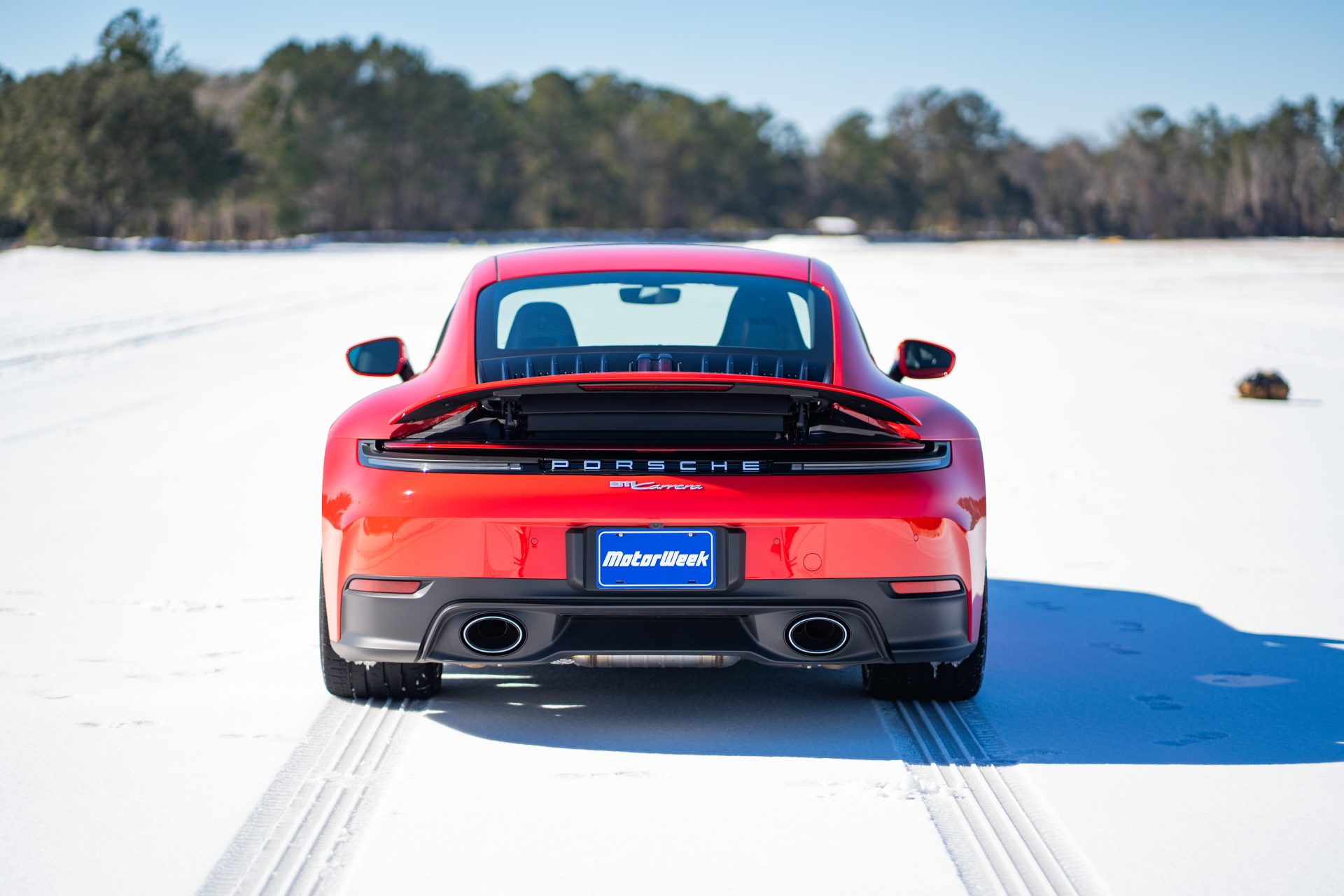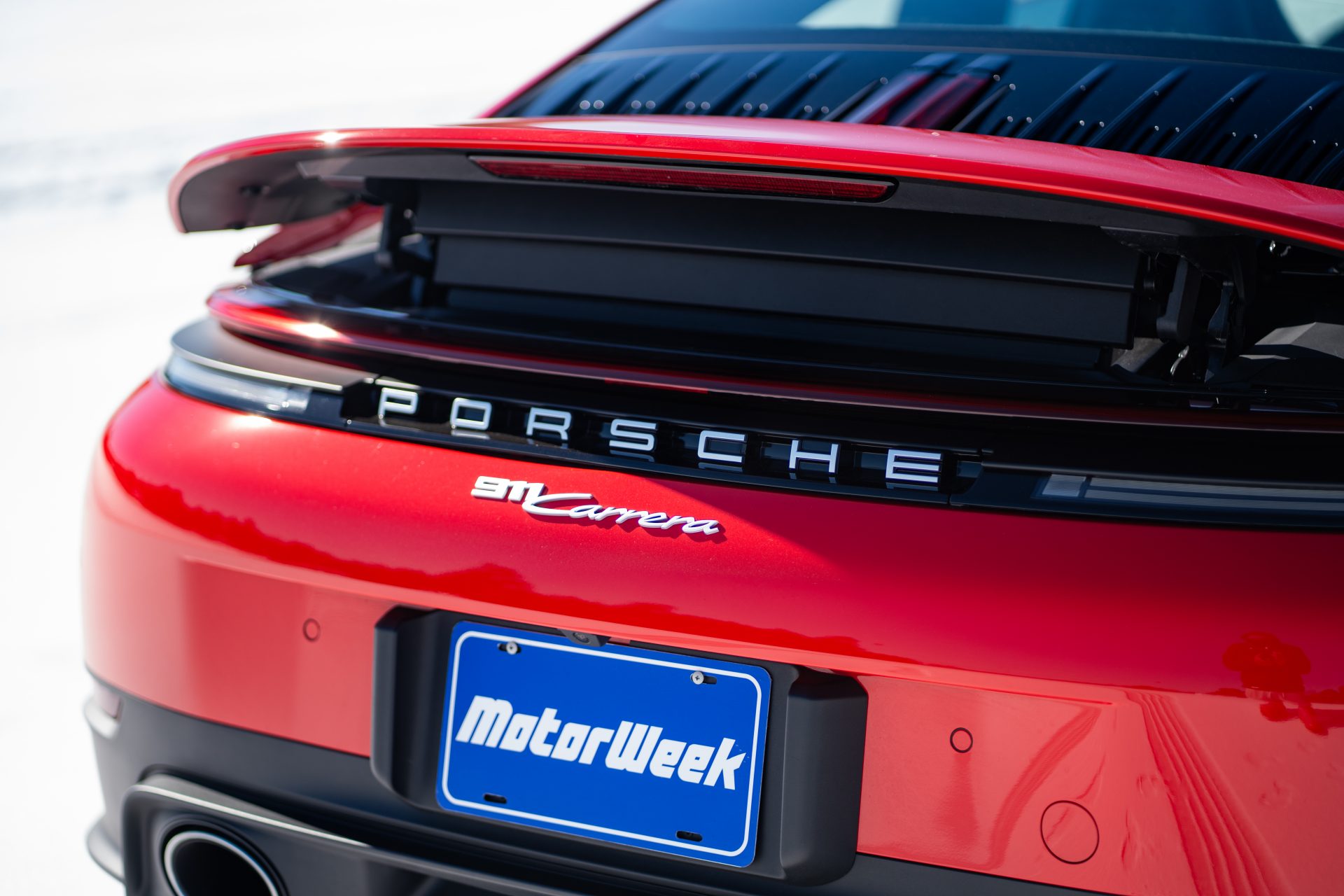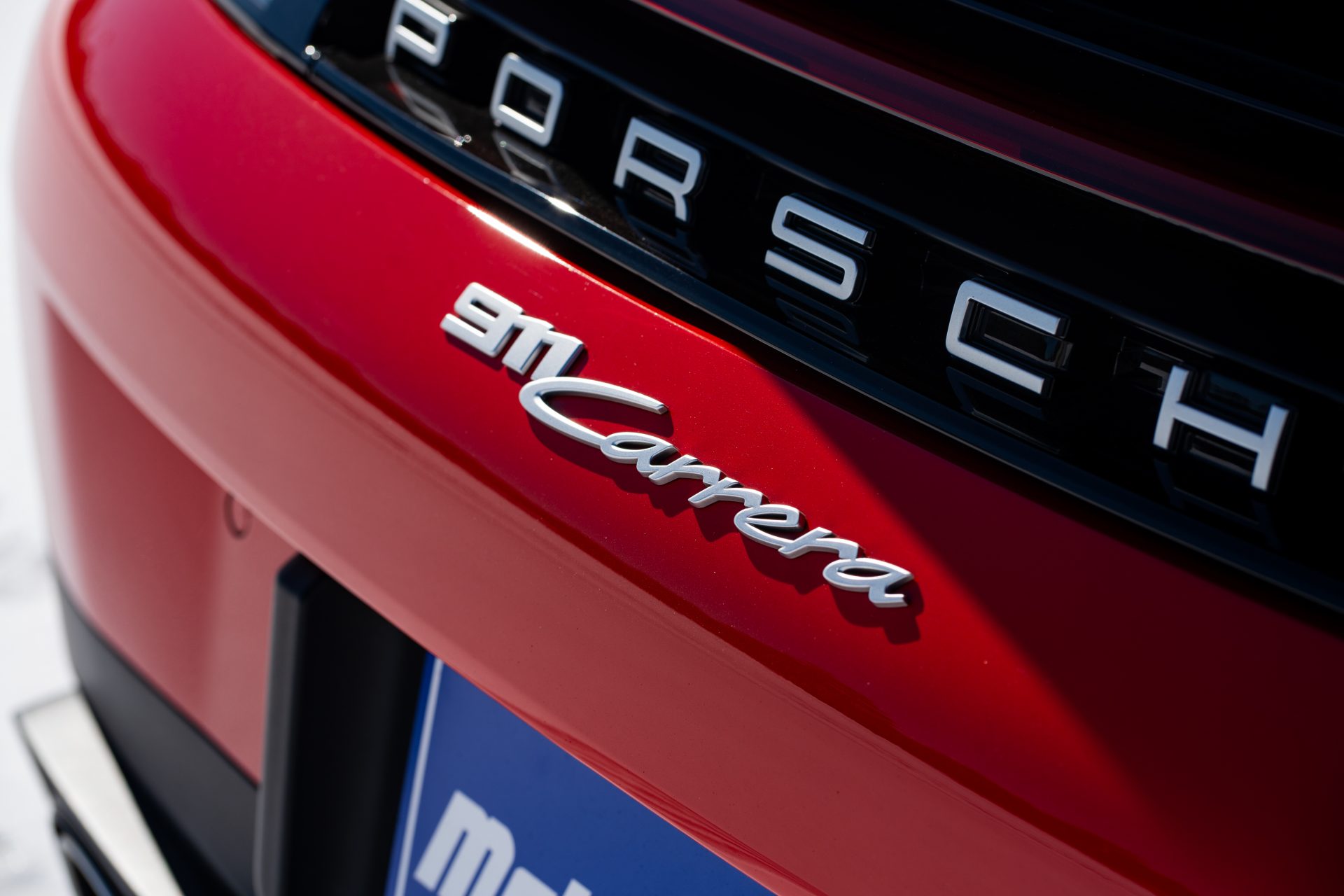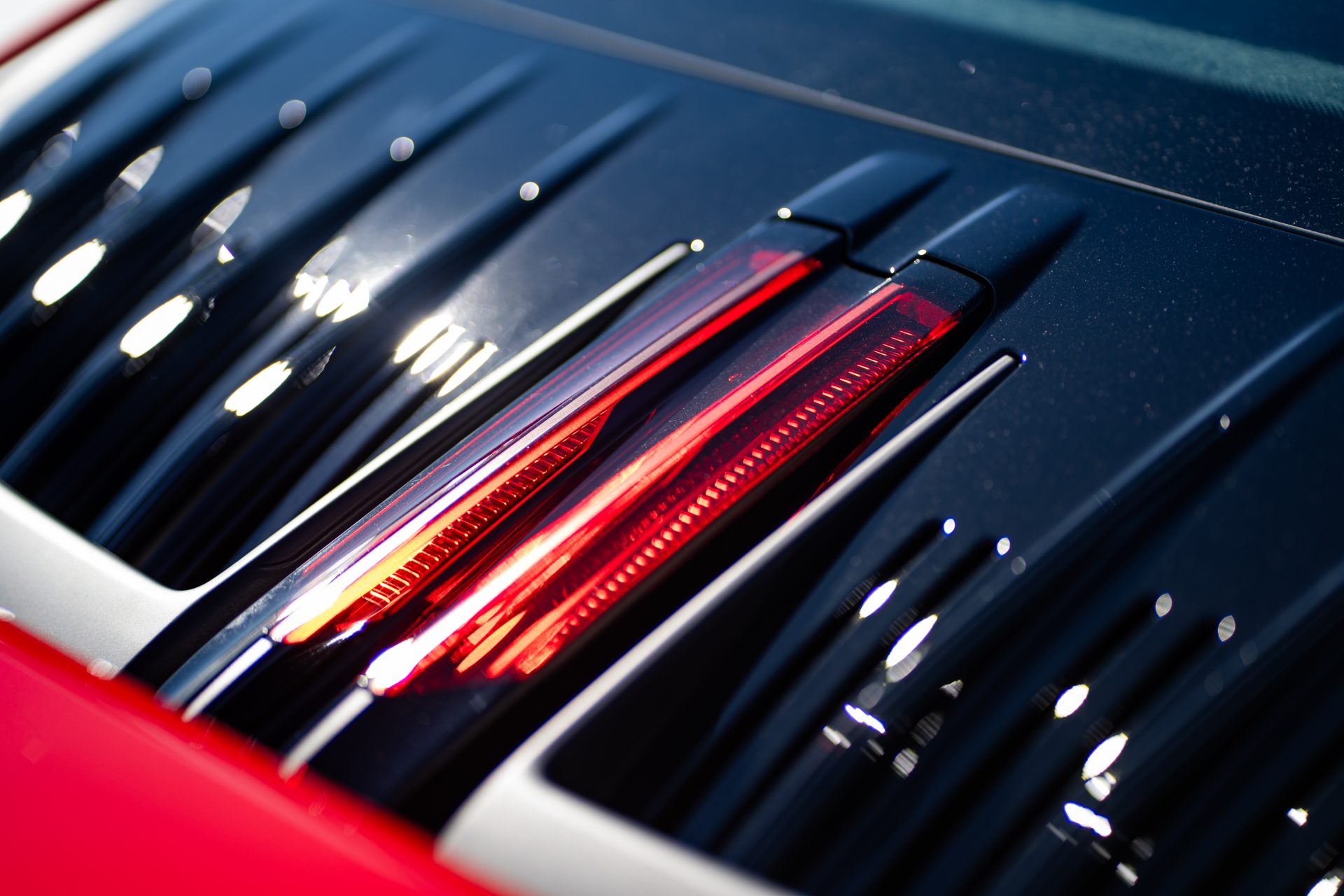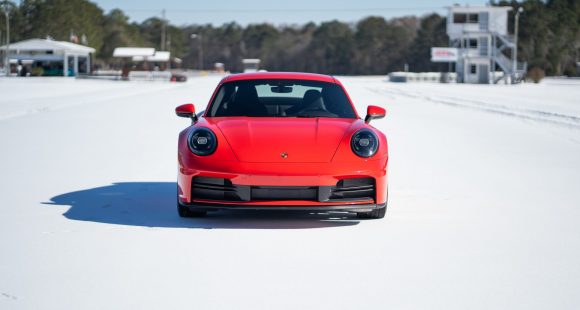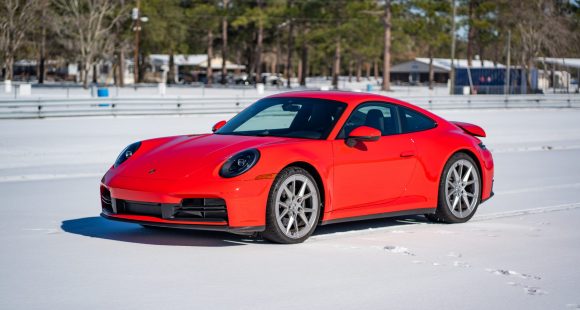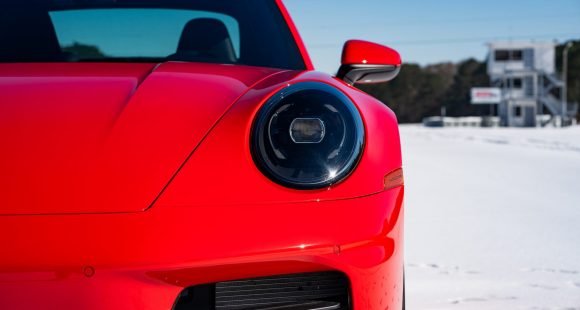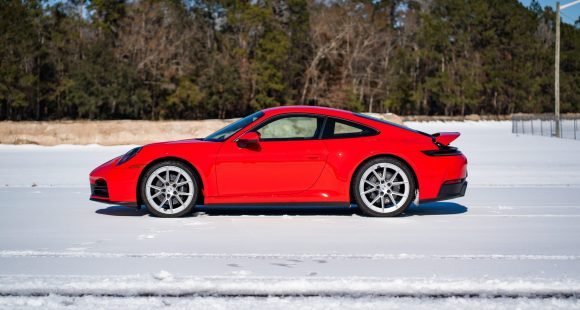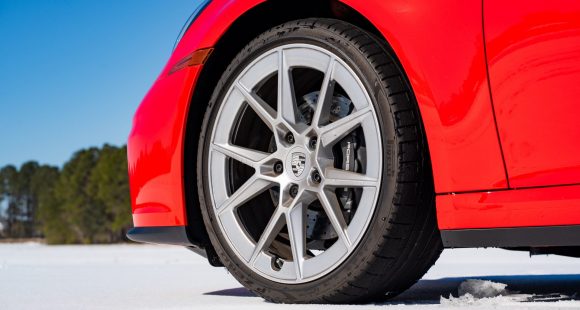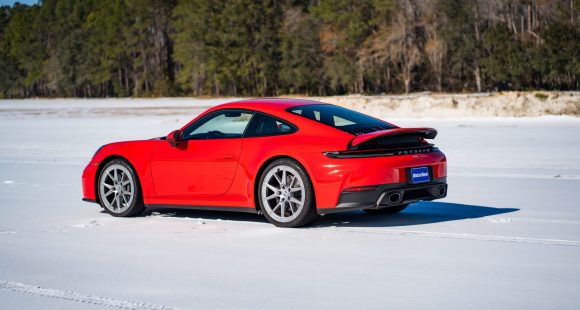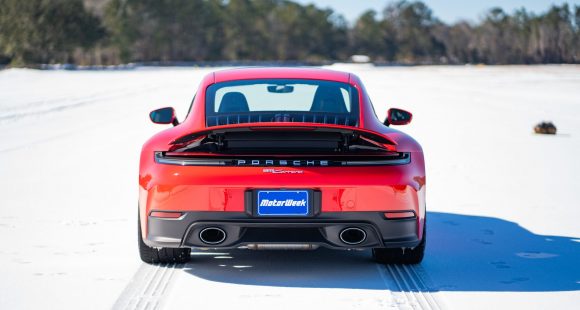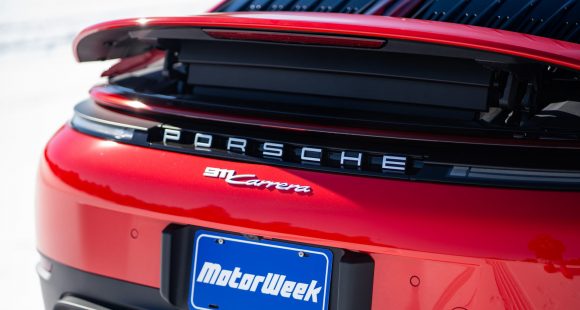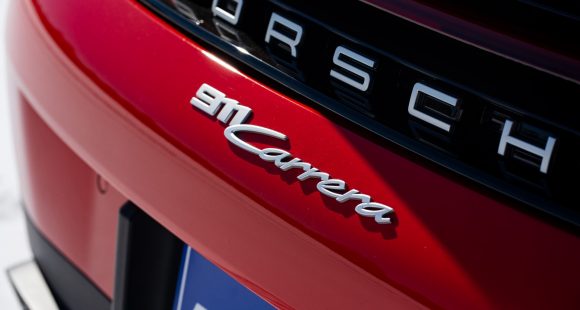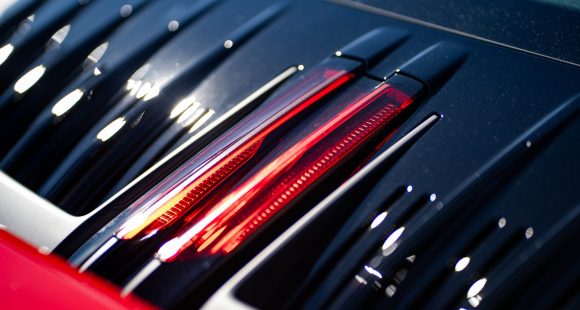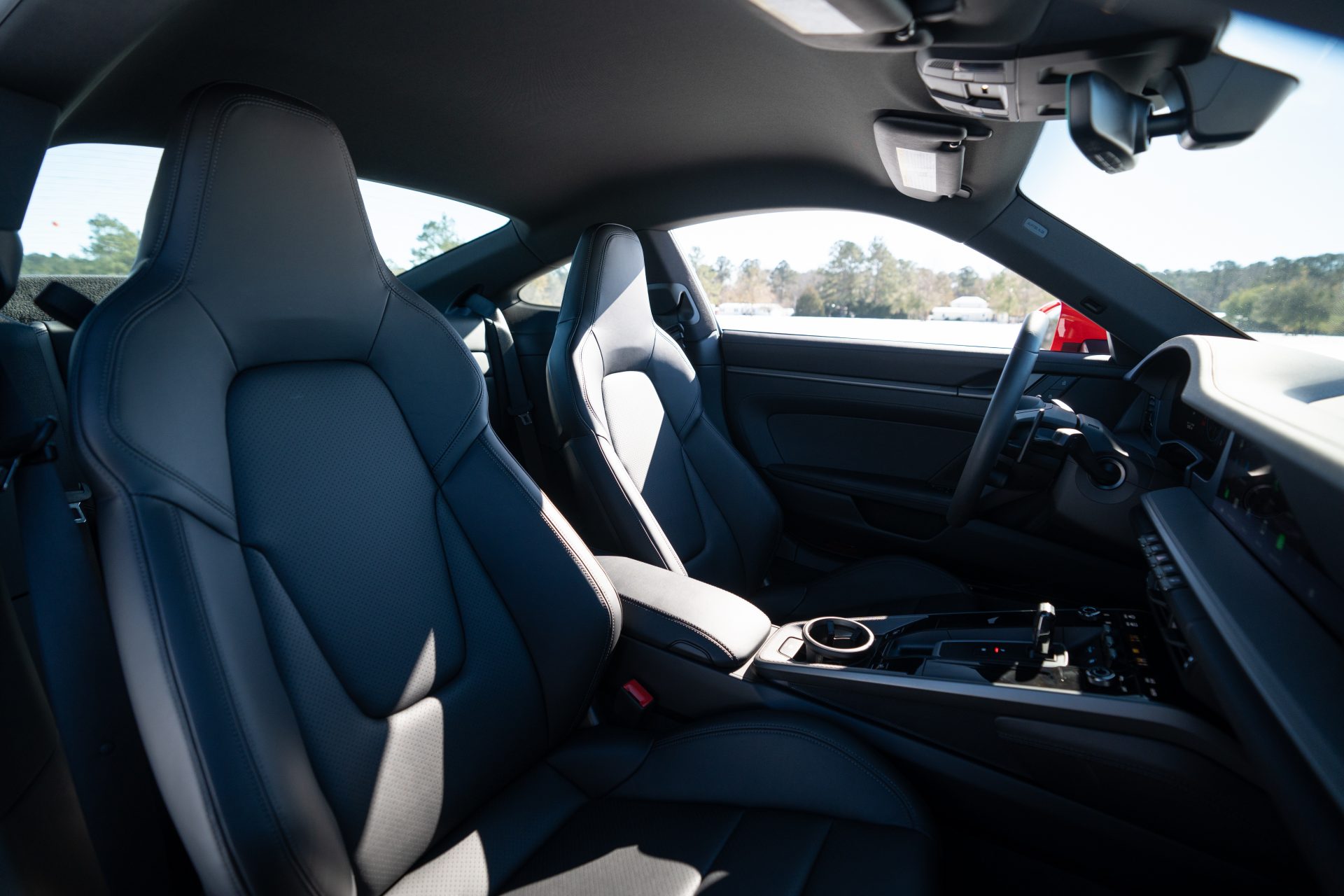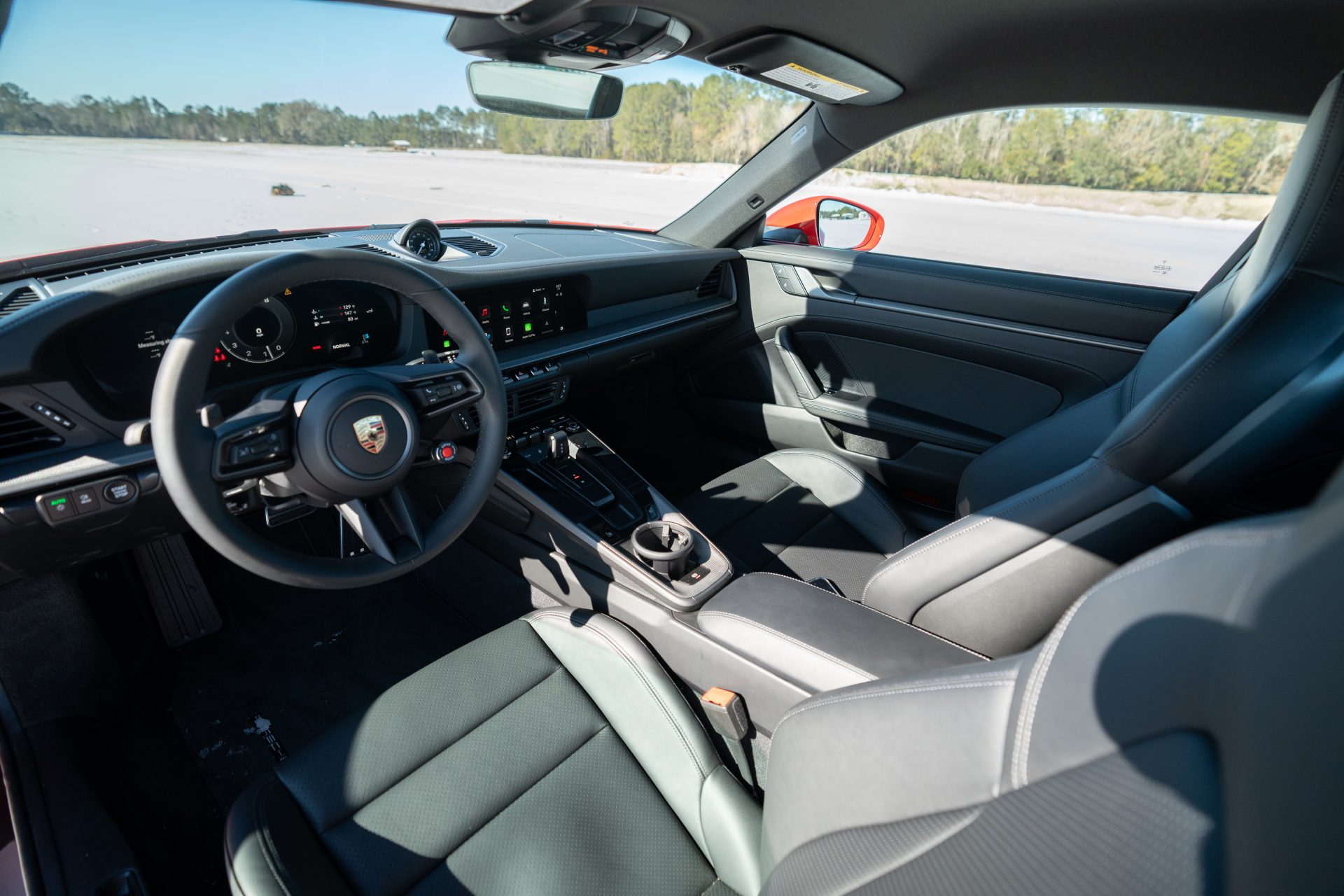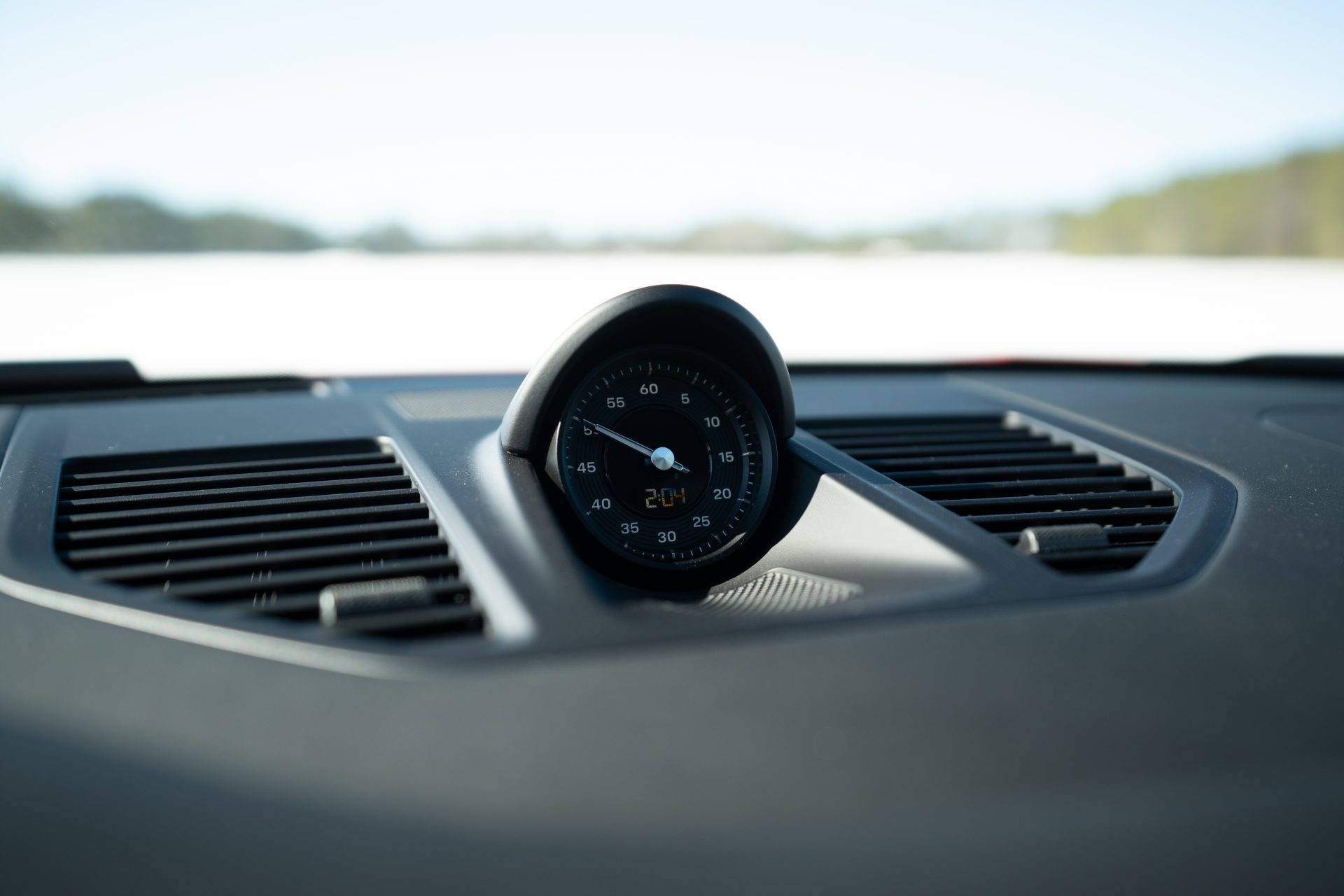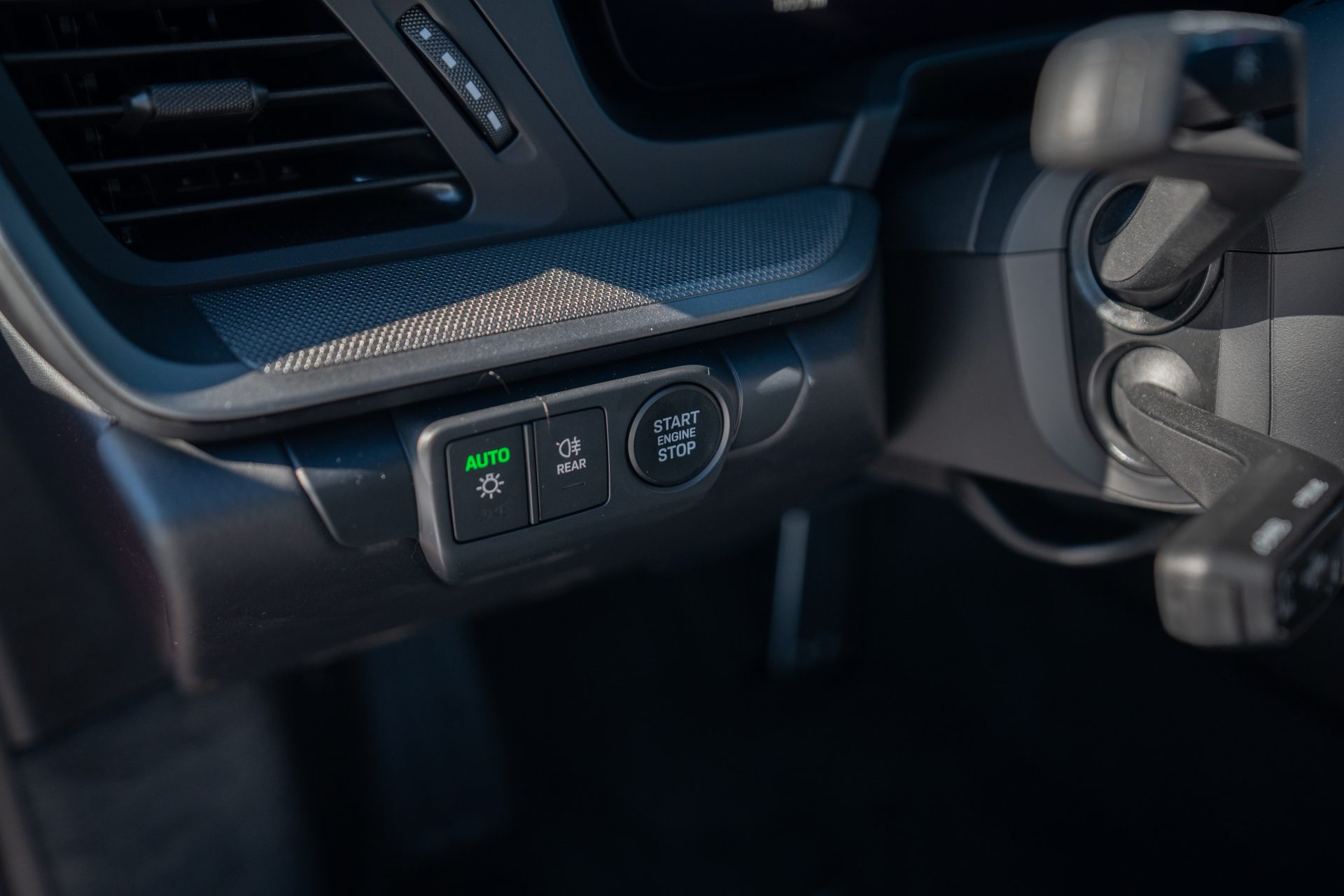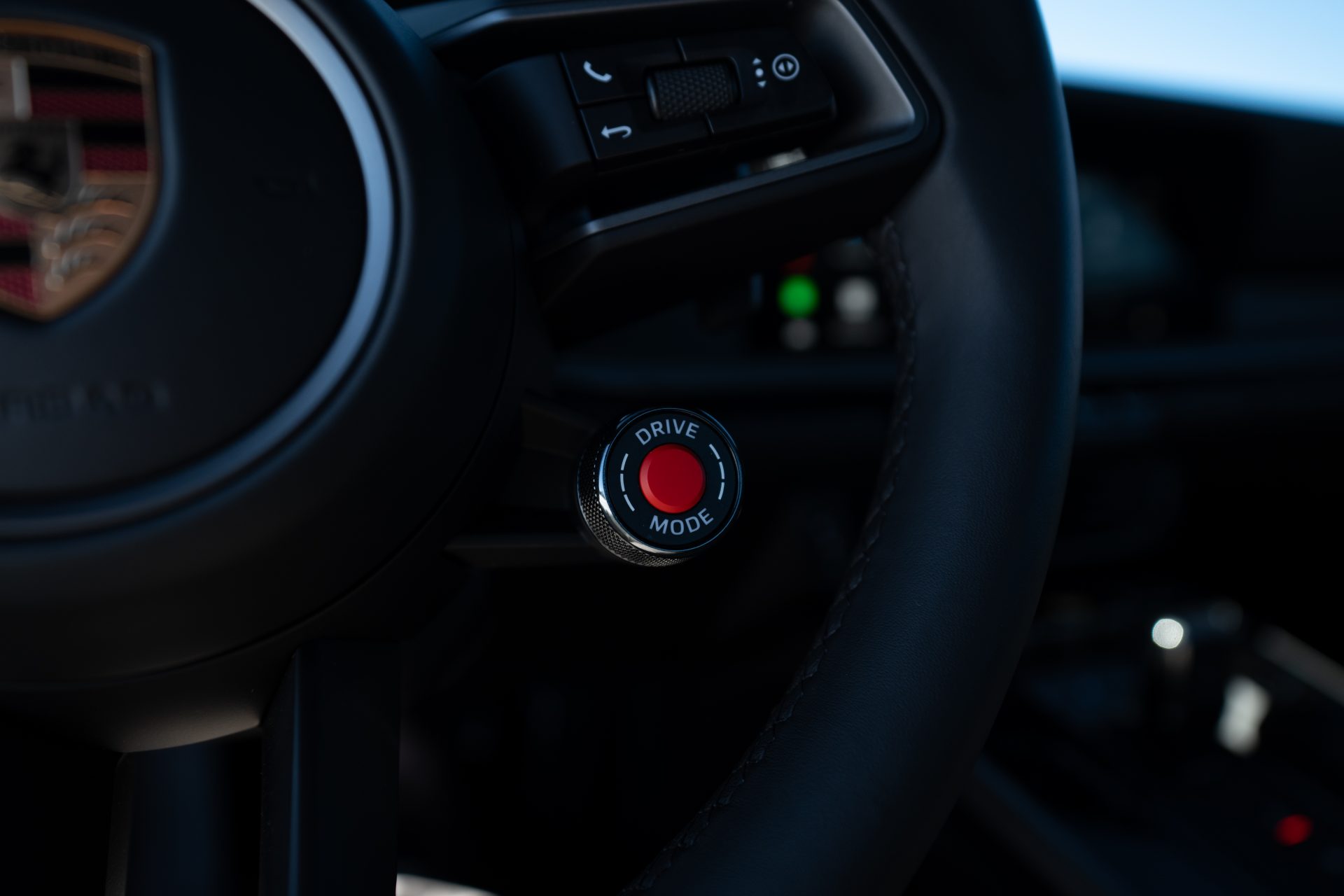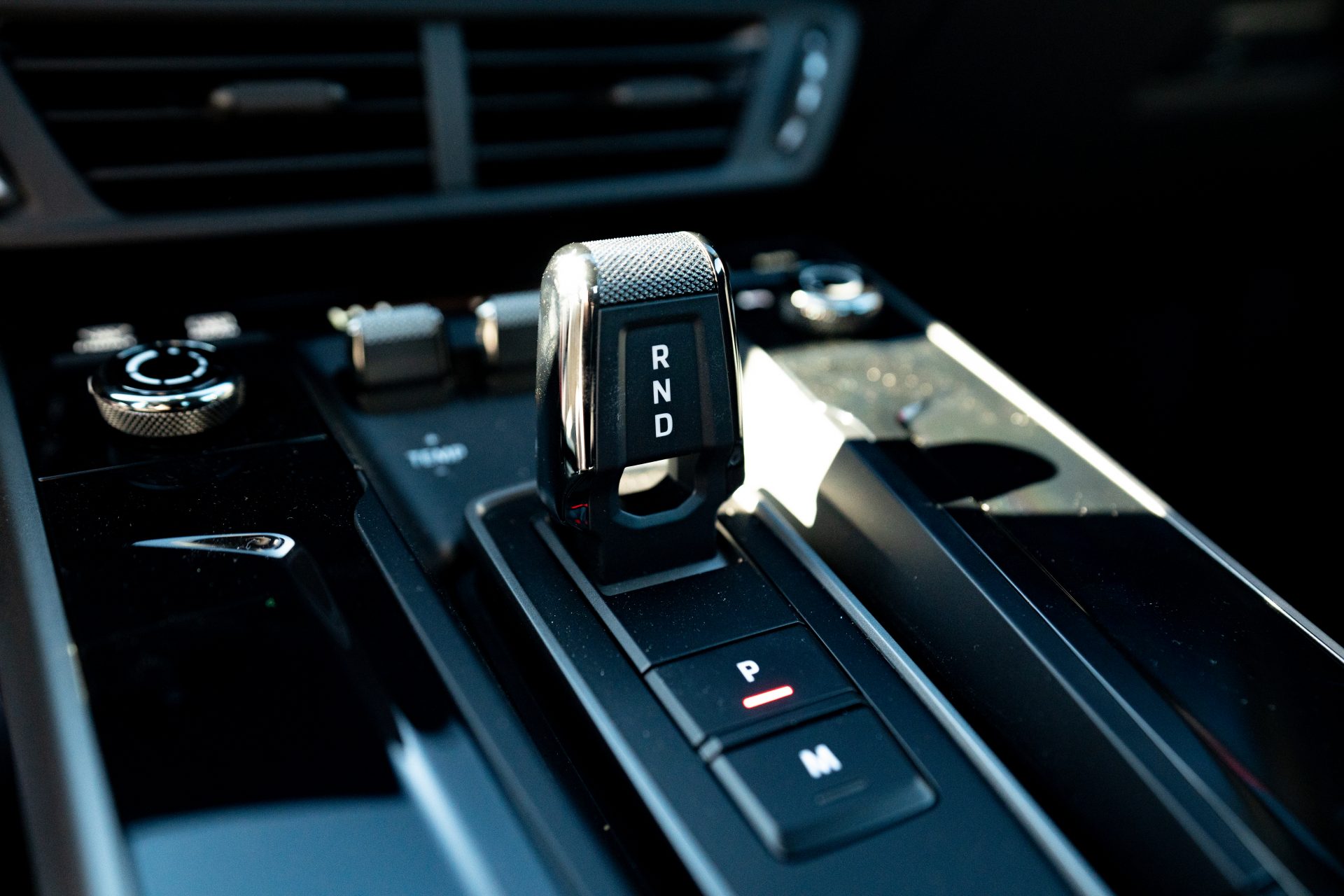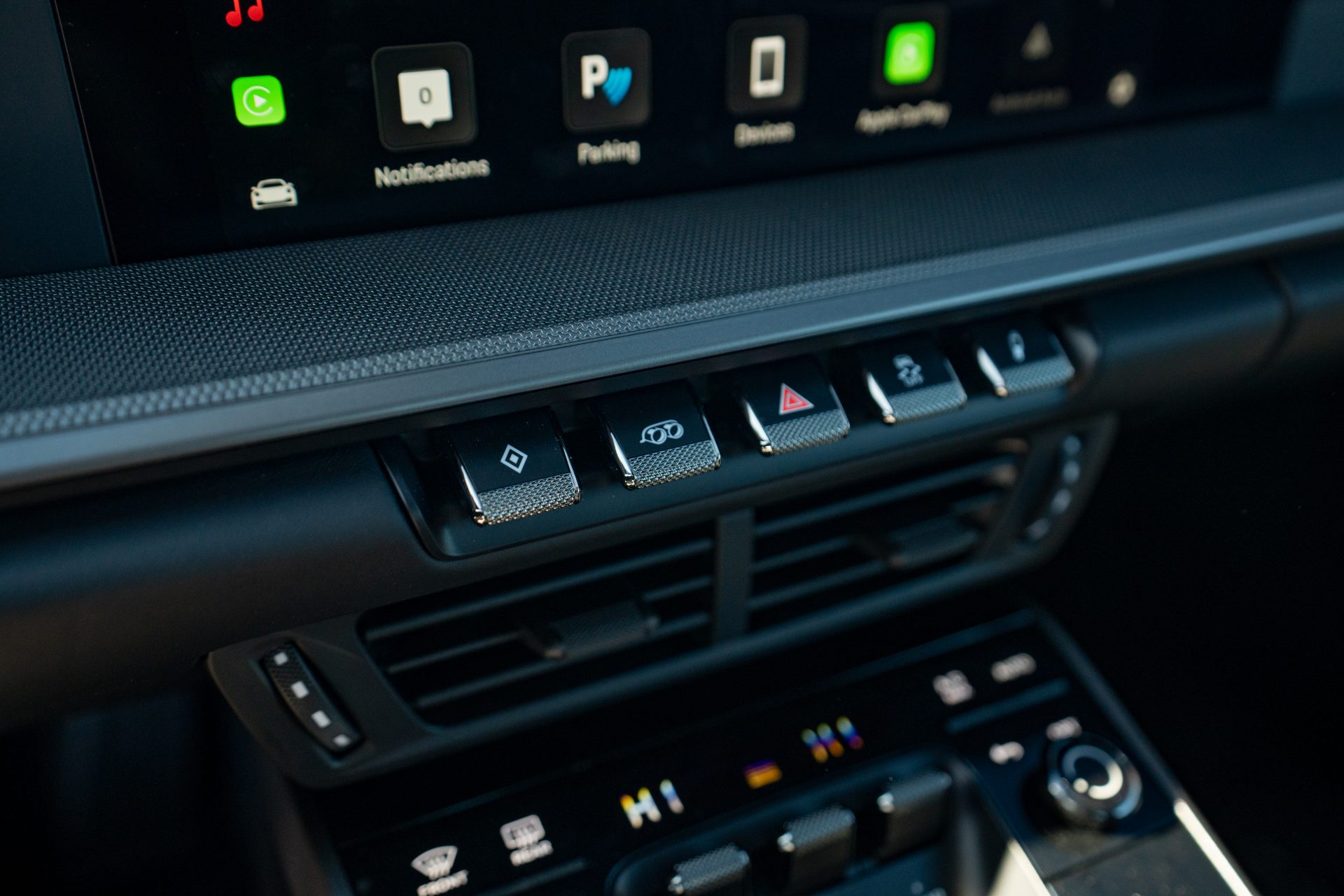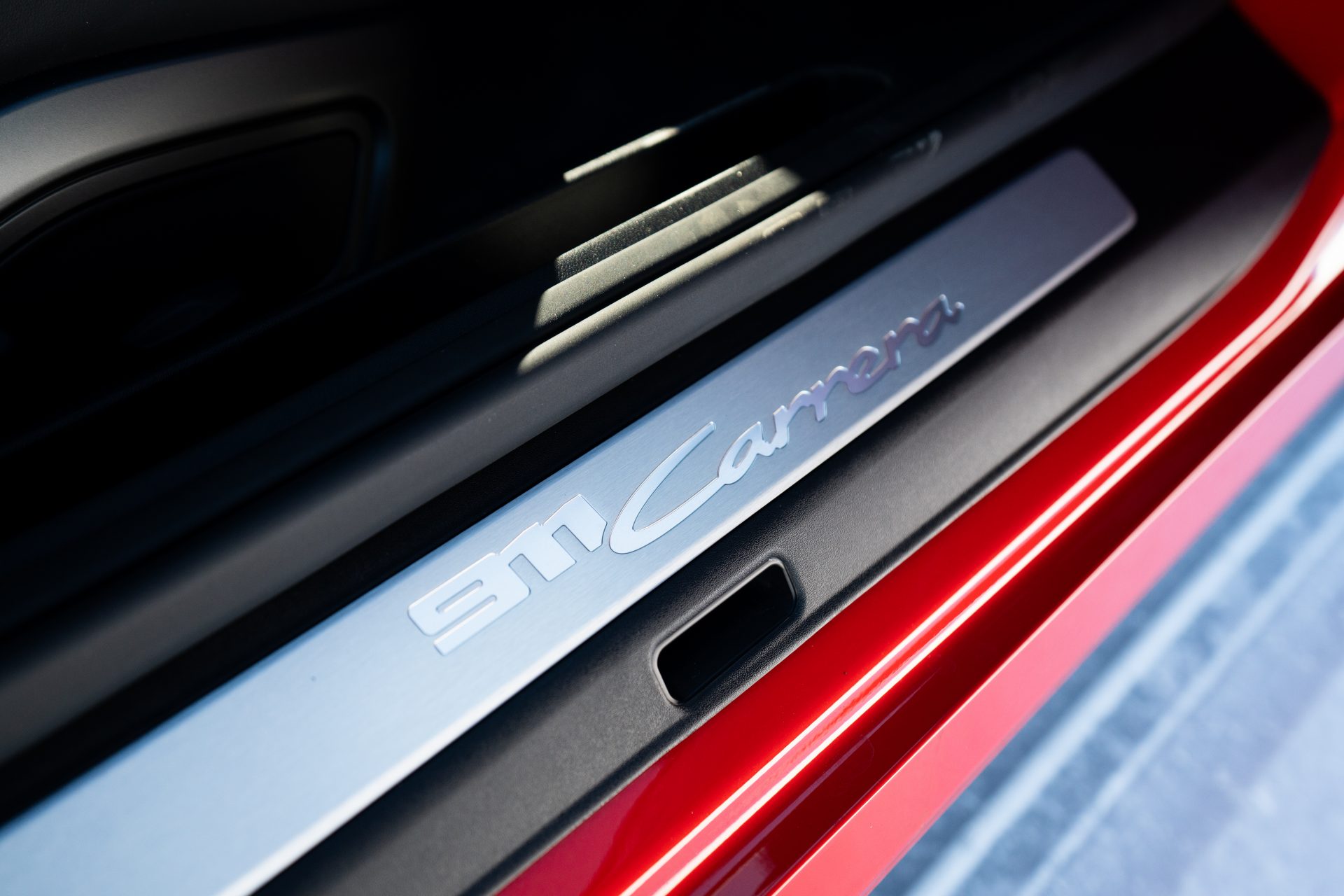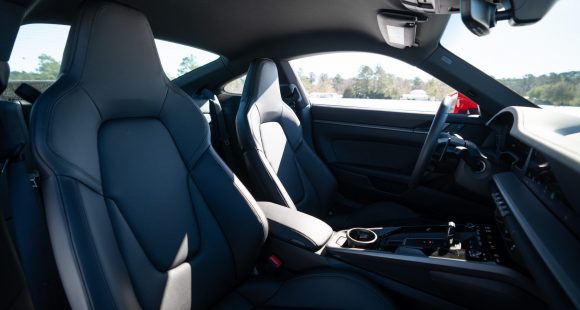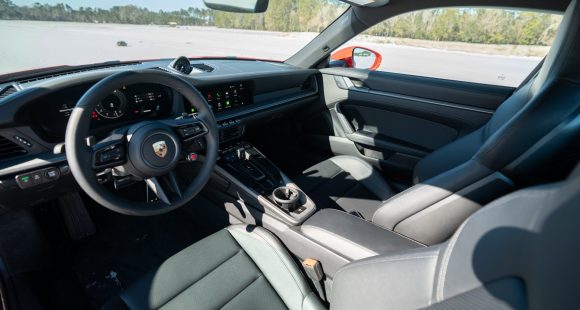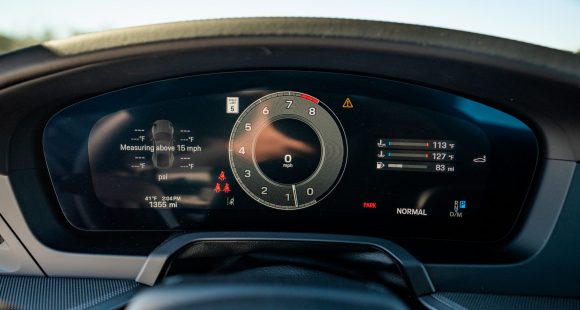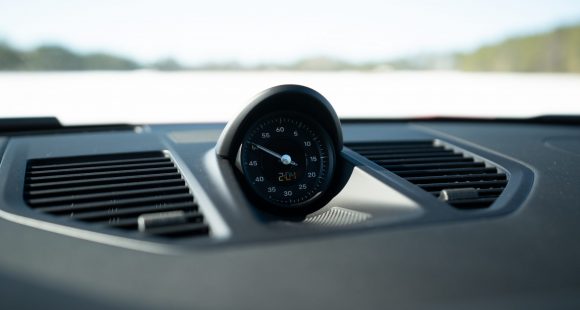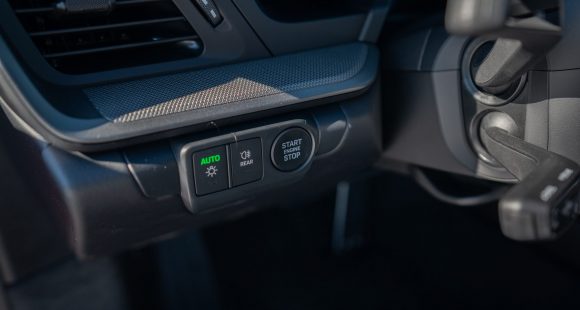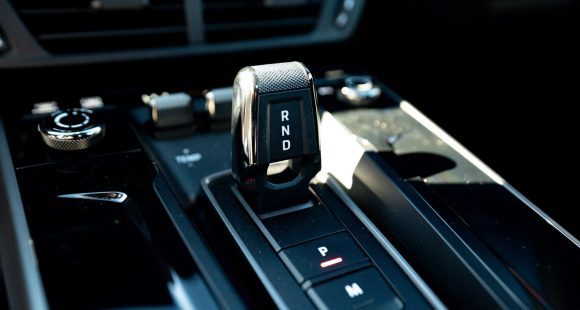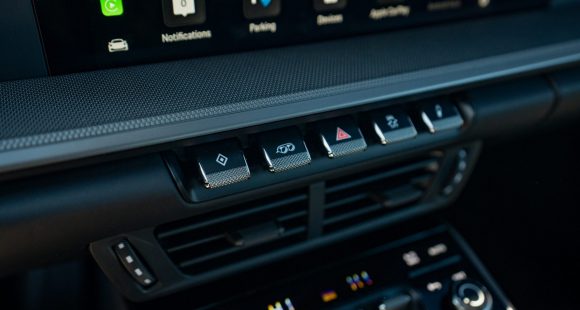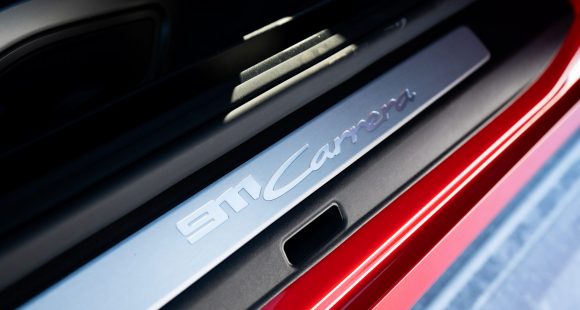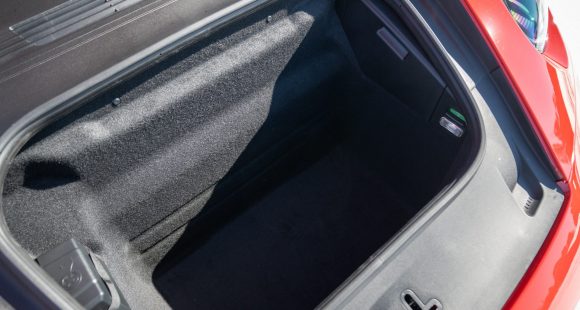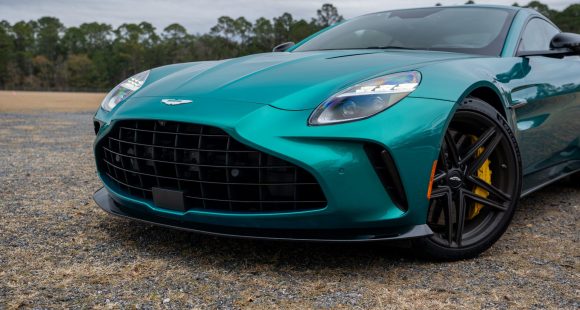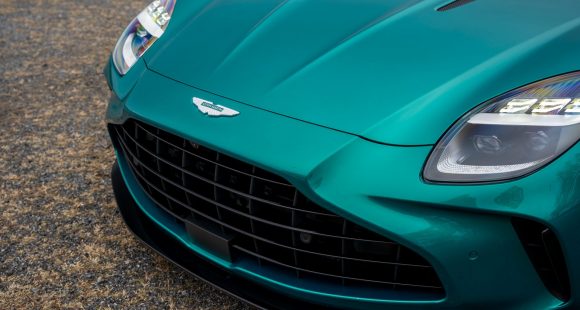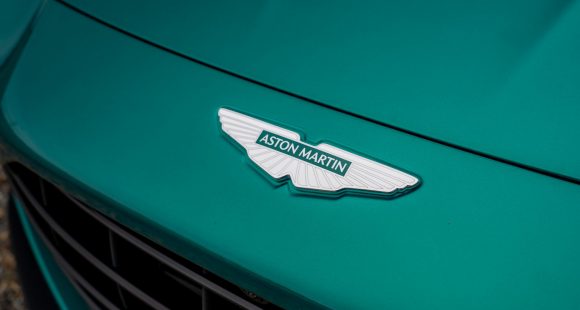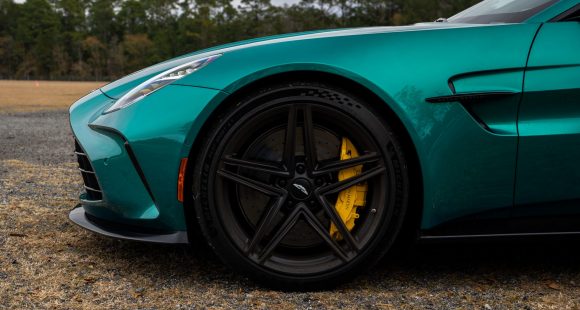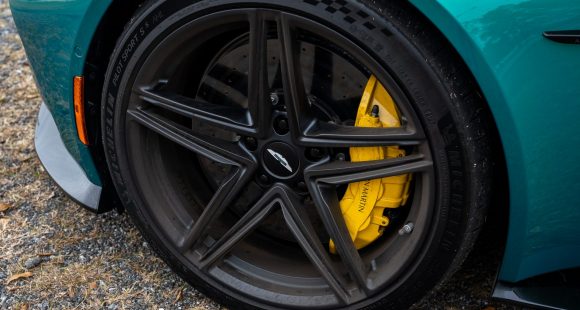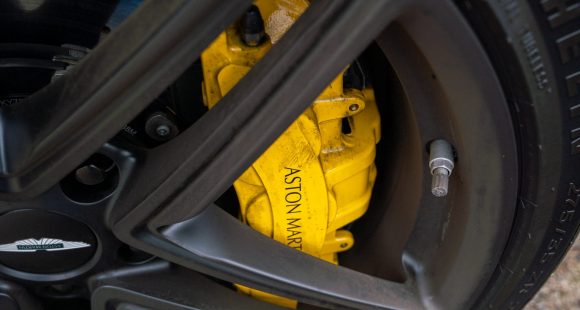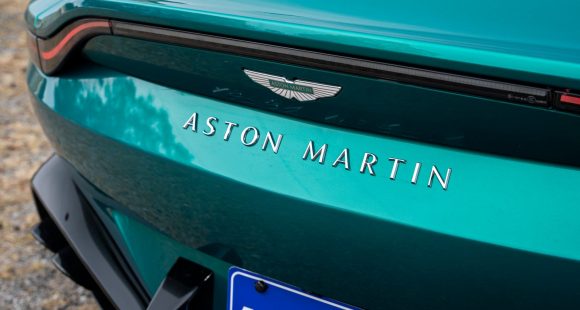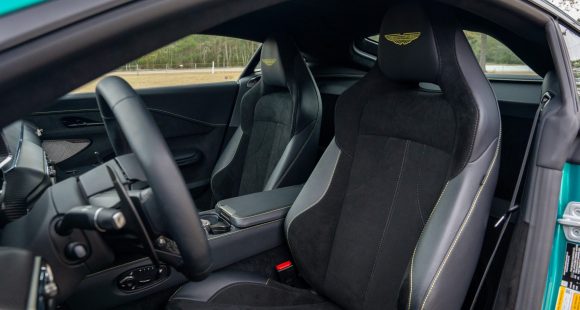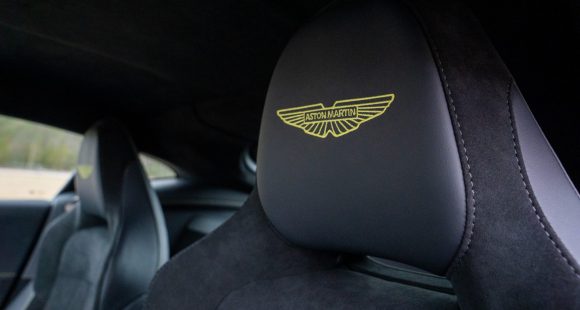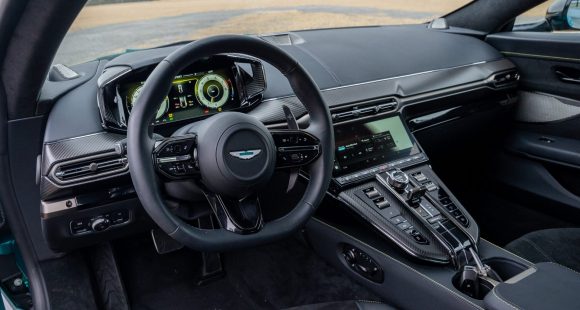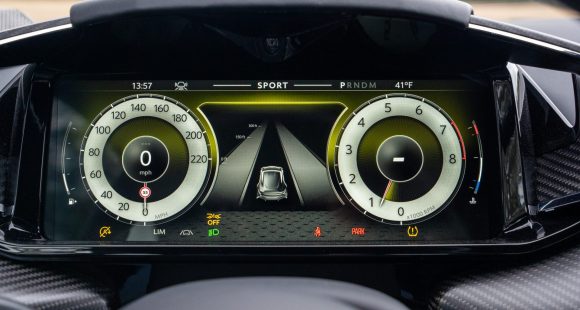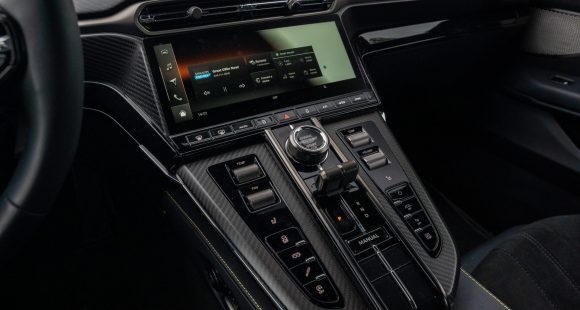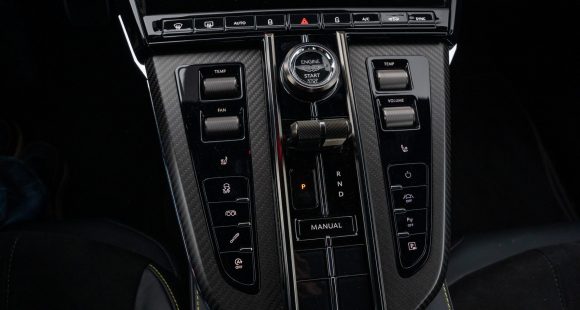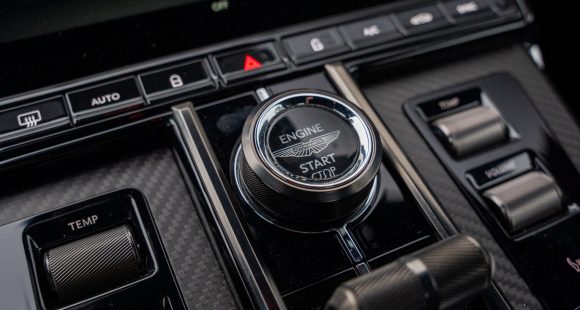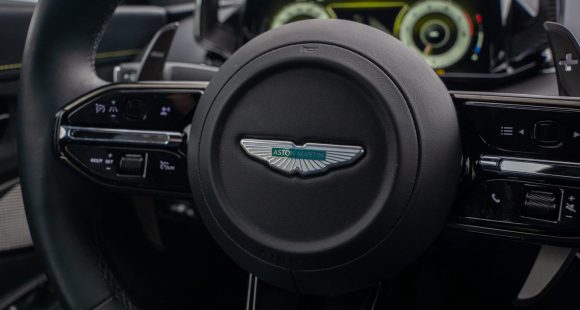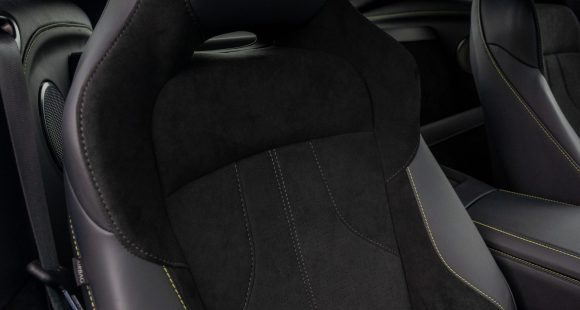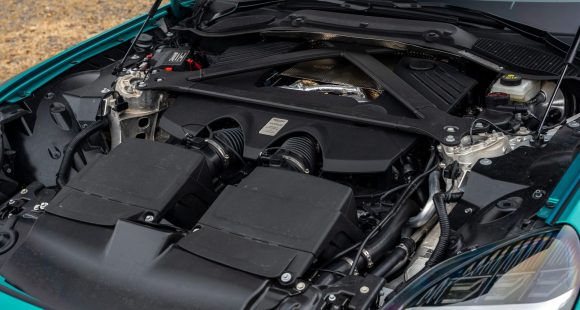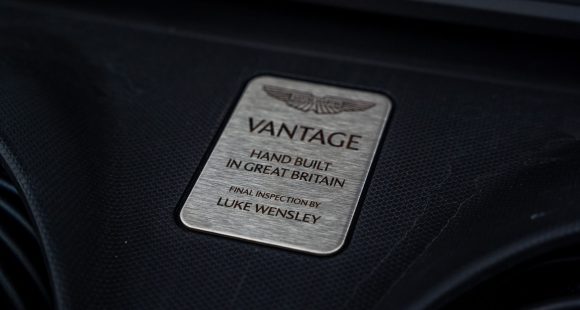2018 Volkswagen Tiguan
Volkswagen has certainly had their ups and downs in recent years. But their current approach of making larger, more comfortable vehicles; and then selling them to Americans at attractive prices, is a real crowd pleaser. So, let’s see how that tactic works for their all-new compact utility, the Tiguan.
The first thing you notice about the all-new, second generation, 2018 Volkswagen Tiguan is how mega roomy it is inside. It may still be considered a compact crossover, but the feel is far more midsize, being clearly aimed at American buyers. In fact, it is even built just south of our border in Mexico.
Now, the first gen Tiguan was imported from Europe. And, while on sale here for ten years, it was never very popular.
The new Tiguan still looks a little like the original, but VW’s modern, angular theme is much more in play now. The very long rear doors not only speak to all the space inside, but indicate the Tiguan now rides on a stretched wheelbase version of VW’s flexible MQB platform. It’s more than 10-inches longer overall than before.
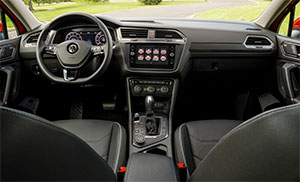 Inside, the front seats may appear flat and painful; but actually, it’s the opposite that is true. They are firm, but comfort is excellent; plus, there are plenty of adjustments, and getting in and out is very easy.
Inside, the front seats may appear flat and painful; but actually, it’s the opposite that is true. They are firm, but comfort is excellent; plus, there are plenty of adjustments, and getting in and out is very easy.
Our SE tester is just one step up from base trim, yet features an 8-inch touchscreen, push button start, dual automatic climate control, a host of safety features, and leatherette seat covers.
It’s in the 2nd row that you experience all that extra space the most. Legroom is equal to many midsize entries, and seats back here are very cozy as well.
Need more seats? A 3rd row is standard in front-wheel-drive Tiguans, optional with all-wheel-drive. But alas, this may be one roomy compact, but it is still a compact. The 3rd row’s two seats are only usable for small children. But, at least they do offer it.
With those seats folded, the cargo bay is also spacious of course; but there’s an unevenness to the space due to the folding 3rd row, that keeps it from being as efficiently packaged as it could be. Still, 33.0 cubic-ft. is quite good, maxing out at 65.7 with the standard 40/20/40 2nd row seats folded.
 No power lift-gate on our SE trim, SEL and above only; but the very light hatch virtually lifts on its own anyway.
No power lift-gate on our SE trim, SEL and above only; but the very light hatch virtually lifts on its own anyway.
The Tiguan is not exactly stimulating or high-tech looking inside, but is highly functional and intuitive. The larger touch screen found in all but base S trim is much easier to use, the radio sounds very good, and gauges are clear and simplistic as always with VW.
Power comes from a revised 2.0-liter turbo I4 with standard auto stop/start. Horsepower is down from 200 to 184, but torque is up from 207 to 221 lb-ft. It has adequate guts to move the Tiguan’s, 3,800-lbs., but some may wish for more.
We surely did at our test track, where the Tiguan jogged to 60 in 8.8-seconds.It certainly didn’t help that it immediately cuts power at even a hint of wheel spin. Power builds slowly down the track, and the engine sounds pretty decent; but otherwise it’s an unremarkable 16.8-second ¼-mile trip that finishes at 84 miles-per-hour.
Tiguan redeems itself through the cones, however; with quick steering and a nimble chassis, like a slightly heavier Golf wagon, which essentially it is.
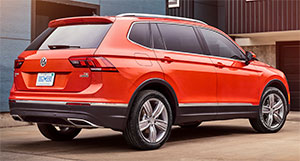 No surprise, brakes performed well. 118 feet from 60 to 0 with a short travel, firm, confidence inspiring pedal.
No surprise, brakes performed well. 118 feet from 60 to 0 with a short travel, firm, confidence inspiring pedal.
2-wheel-drive Government Fuel Economy Ratings are 22-City, 27-Highway, and 24-Combined. For an average Energy Impact Score of 13.7-barrels of yearly oil use with CO2 emissions of 6.1-tons.
Pricing starts at a reasonable $25,495; add $1,300 for all-wheel-drive.
With the new Tiguan, and the larger Atlas, Volkswagen is clearly pulling out all the stops to gain U.S. market share. Launching two 3-row SUVs in short order is very bold. And, backing them with a 6 year/72,000-mile bumper-to-bumper warranty is very smart.
The cosmetics may be unremarkable; but the 2018 Volkswagen Tiguan is a comfy, highly useful, competent handling, well thought out, and yes…American-style crossover. To us it sure looks like VW is fast becoming the Honda of German cars.
Specifications
- Engine: 2.0 liter
- Horsepower: 184
- Torque: 221 lb-ft.
- 0-60 mph: 8.8 seconds
- 1/4 mile: 16.8 seconds @ 84 mph
- EPA: 22 mpg city / 27 mpg highway
- Energy Impact: 13.7 barrels of oil/yr
- CO2 Emissions: 6.1 tons/yr
2025 Porsche 911 Carrera
Ever Evolving 911 Reaches New Heights
The Porsche 911 has existed for 60 years now! Amazing! And, you could argue that major changes over all those years have been relatively few, as constant incremental improvement is more the way that Porsche does business. With that in mind, let’s hit the track in the latest 911 and see what constant improvement means for 2025.
We’ve driven so many 911s here at MotorWeek, each seemingly more special than the last, so it’s a bit refreshing to be ripping around Savannah’s Roebling Road Raceway in a 2025 Porsche 911 that’s about as close as you can get to base these days. And the fact that it’s just as fun as all those exclusive pieces says a lot about how far the 911 has come. Perhaps it also speaks to how much a base 911 will set you back today as well; more on that later.
For now, we’re just thinking about the next apex, holding steady throttle as we approach, and getting on it way sooner than you’d expect without upsetting anything, as the 911 rockets off the corner thanks to tremendous grip and a PDK trans that finds the perfect gear before we even gave it a thought. Even with very cold track temps, we never struggled for grip or battled any wheelspin coming off of corners. And trying to land it in that perfect spot in braking zones is easy with strong brake performance that was predictable and consistent lap after lap; no wandering, and great feedback too.
Yes, even the standard 911 is near pure perfection on a racetrack. It gives you all the right feedback, stays incredibly flat through corners, makes you always feel totally in control, and again is just plain fun. Unless you’re chasing lap times, there’s really no need to head further up the 911 tree. Though it is worth noting the few upgrades that were on our Carrera did help the situation a little. The 20- and 21-inch Carrera S wheels enabled plenty of grip from the 305 Pirelli P Zero tires, the Sport Chrono Package allows 0-60 sprints of 3.7 seconds, an extended range fuel tank meant we could lap all day without having to fill up, and the fantastic Sport Seats provided great support and better comfort than we remember experiencing in a 911. The Sport Exhaust system didn’t add anything to performance, but made things sound a whole lot better, and the oval silver tips look great too.
We never struggled for grip or battled any wheel spin coming off of corners.
Our track time got cut short thanks to a rare snowstorm in Coastal Georgia, but the white stuff and blue sky made the perfect backdrop for our Guards Red Carrera. Exterior tweaks for what is officially the 992.2 include a reshaped front fascia with improved aerodynamics. All front lighting is now contained within the Matrix Design LED headlight housing. The rear fascia has also been smoothed out, the license plate moved higher, and Porsche 3D block lettering spelled out across the back beneath the active rear spoiler and new decklid grille.
Even without Turbo in the name, the standard 911 engine is indeed a turbo these days, a 3.0-liter flat-six twin-turbo delivering 388 horsepower and 331 lb-ft strictly to the rear wheels in the Carrera Coupe.
Inside the cabin, the 911 continues its slow crawl towards the modern, now including a 12.6-inch fully digital gauge display and a start button located on the left side of the steering wheel, with drive modes easily accessible on the wheel itself. In another no brainer move, Porsche now makes the rear seat a no cost option, so you can choose if you want it or not.
Government Fuel Economy Ratings are 18 City, 25 Highway, and 21 Combined. That’s only slightly worse than average for the Energy Impact Score; 14.2 barrels of annual oil consumption with 7.0 tons of CO2 emissions.
The good news is this 911 had the fewest number of options of any Porsche that we’ve tested in some time, and it was still plenty awesome; the bad news is, a base Porsche 911 Carrera Coupe now starts at $122,095.
But can you really put value on “the force,” this mythical power that Porsche seems to have, that somehow turns average drivers into great ones? It’s useless to resist as far as we’re concerned, as it only gets better with the 2025 Porsche 911 Carrera.
Specifications
As Tested
- Engine: 3.0-liter twin-turbo flat-6
- Transmission: 8-speed PDK
- Horsepower: 388
- Torque: 331 lb-ft
2025 Aston Martin Vantage
Gorgeous Aston Martin Gets Nasty With Performance
Aston Martin has a long history of delivering high-performance vehicles packed with classic British elegance. But with their latest Vantage coupe, Aston Martin has seriously cranked up the performance part of that formula. So, let’s hit the track and see how it all comes together.
We’re ripping through the nine high-speed turns of Savannah’s Roebling Road Raceway as fast as possible, trying to outrun an epic winter storm that’s about to shut down most of the South. And this 2025 Aston Martin Vantage seems to be enjoying it as much as we are. Quite simply, we didn’t expect the Vantage to be this inspired. After all, Aston has used the Vantage name on a variety of vehicles over the years, but this particular coupe arrived for 2019 and gets a proper and prodigious refreshing for 2025.
Visually, it’s an absolutely gorgeous piece of machinery, with the exaggerated proportions that would be borderline cartoonish if they weren’t so exquisitely executed. And despite decades of improving camera technology, our lenses simply can’t truly portray the depth and beauty of this Podium Green paint job, part of the “Racing Line” collection.
Now, it may look all British sports car outside, but it still gets its power from a German V8; AMG’s hand-assembled 4.0-liter twin-turbo unit, and for those keeping score at home its 656-horsepower output is a healthy 128 horsepower increase over last year. It sends its 590 lb-ft of torque to the rear wheels through an eight-speed automatic transmission. Somehow this European union comes out feeling more NASCAR than sports car, as the Vantage is crazy fast and a handful to drive.
For being a GT car at heart, the Vantage has a very dynamic feel to it with way more feedback than the typical Grand Tourer. And considering the last Aston Martin we drove was an SUV, it’s great to be back in a proper British sport coupe that’s willing to get down to business on a racetrack. Even with that monster motor up front, the Vantage’s bonded aluminum structure enables perfect 50:50 weight distribution, and you feel right in the middle of it.
The Vantage has a very dynamic feel to it with way more feedback than the typical Grand Tourer.
A complete suspension overhaul includes Active Vehicle Dynamics with adaptive dampers, an electronic rear differential, and new 21-inch Michelin PS 5s. It all works through Adjustable Traction Control with eight levels of intervention, including full-off if conditions are appropriate. It does have some roll to it, but it feels very natural. Integrated Brake Slip Control modulates braking on turn-ins, and with the Carbon Disc upgrade, braking performance was exceptional once they were warmed up. ABS was quick to trigger until we got some heat into them, after which point their bite was strong and consistent.
The biggest takeaways from our track time: it feels insanely powerful and sounds incredibly ferocious, yet at the same time, it’s so smooth and refined it’s easy forget your speed. Alas, we couldn’t outrun that snowstorm which arrived before we could do any acceleration runs, but we expect the Vantage can do a mass Brexitous to 60 in 3.4 seconds, aided by a new Launch Control system.
It feels every bit as special inside. The cockpit is a little tight, but everything is within easy reach and logically placed. The Mercedes-Benz influence is much less noticeable with an all-new console and center stack. Switchgear and materials feel exquisite and purposeful, with lots of carbon fiber and leather. The 10.3-inch infotainment screen is another big change, as the Vantage gets Aston’s new in-house system first seen in the DB12.
Government Fuel Economy Ratings are 15 City, 22 Highway and 18 Combined.
Vantage pricing starts at $194,500, with plenty of ways to make that number climb in a hurry.
Staying true to the brand while absolutely tearing up a racetrack, well, you really can’t ask for anything more than that. That’s what makes the 2025 Aston Martin Vantage so special. It’s a great place to spend your high-performance dollars if you’re looking for something a little different, but with even more of the familiar thrills.
Specifications
As Tested
- Engine: 4.0-liter twin-turbo V8
- Transmission: 8-speed automatic
- 0-60 mph: 3.4 seconds
- Horsepower: 656
- Torque: 590 lb-ft







